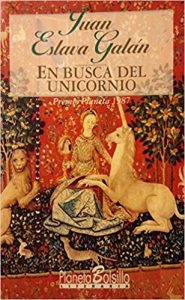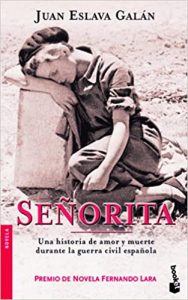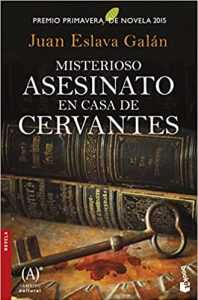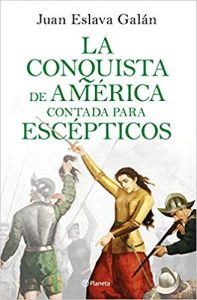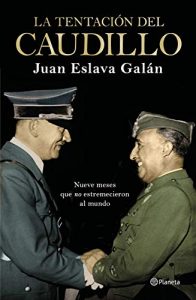Mastery of the subject can make a good writer exceptional. And that's the case with Don Juan Eslava Galan, prolific author, great popularizer and great fictioner, when he plays, on various moments in history. That in addition to being a writer, he is a philologist and a doctorate in History ends up adorning a curriculum that is amply contrasted in transcendental novels and essays in that intention of approaching history and, what is more important in my opinion, the intrahistories that make up the social reality of each moment.
The Middle Ages is usually the period in which this writer develops. Many of his greatest fiction proposals go back to the end of that dark time as necessary for the evolution of our civilization.
Grandes mysterious to unveil or fantastic settings that pass between reliable facts, a fascinating way of knowing the past and enjoying that scenery combined between what was and delicious ramblings ...
Top 3 novels by Juan Eslava Galán
In search of the unicorn
Back in 1987, a writer already in full maturity, but still unknown to the general public, became known with this novel winner of the Planeta prize.
For me it is a satire, a mockery in a fantastic key about the labels with which the characters of the past are adorned, especially kings or nobles. Endowed with an unsurpassed formal quality, Juan combines in this novel the language of that moment, as an essential setting, with more up-to-date terminology, so that the story can be followed perfectly. Humor, adventures and the fundamental background towards the knowledge of the past.
Summary: The novel, set at the end of the XNUMXth century, tells the story of a fictional character who is sent in search of the unicorn's horn, which is supposed to increase the virility of King Henry IV of Castile, called the Impotent.
In the plot, highly skilled and very entertaining, within a scrupulous fidelity to the historical setting, the most curious and unexpected adventures take place, always with an emotional and poetic background that gives strength and mythical charm to the story.
The author has achieved a style that is a wonderful balance between narrative ease and agility and the archaic flavor that the subject required. In short, a delicious adventure novel where the fantastic, the humorous and the dramatic coexist.
Ms.
At the gates of the Second World War, and with the Spanish Civil War unfolding in that endless guerrilla front, the author offers us a plot of espionage on what the Spanish conflict could mean for the imminent European outbreak. The most personal spheres end up accompanying an espionage novel, with its inherent intricacies, in a love story ...
Summary: In the dangerous world of espionage, all the protagonists are agents of some lie. A young Andalusian woman, a Prussian aristocrat, a Russian peasant and a Sevillian shoeshiner plot, during the years before the Second World War, their desires for revenge, ambition or heroism.
In the horror of the Spanish civil war, only a hidden force will be able to thwart the conspiracy of deception: love. The Spanish Civil War allowed other countries to experiment with their plans of conquest and test the effectiveness of their military devices. The Austro-German tyrant Adolf Hitler, who had already drawn up his strategy for the subjugation of Europe, sent to Spain his most prized secret weapon: the Stuka, a dive bombing plane.
The Soviet Secret Service, interested in the deadly capacity of the famous apparatus, instructs a Spanish girl to seduce Captain Rudolf von Balke, head of the operation and member of the Prussian aristocracy.
At the same time, he sent to Spain the pilot Yuri Antonov, an old friend of Von Balke, who would receive the support of a picturesque command of Spanish militiamen. Years later, hardened by the innumerable risks of battle, Carmen, the audacious young Spaniard, searches among the ruins of post-war Berlin for the trace of the man whom, despite everything, she loved.
Then begins the unexpected and fascinating outcome of an incredible story, whose mystery will make us participate in the emotions and the sleeplessness of its protagonists.
Mysterious murder in the house of Cervantes
The Spanish Golden Age also had its share of tinsel. And possibly in that Spain flooded with opportunists, still fervently devoted to its own glory consumed and ruled in tandem by rigid ecclesiastical morality and the regents on duty, we can find a clear reflection of what we ended up being. The fiction with Cervantes as a star character is almost already a literary resource that he also gave a good account of recently Álvaro Espinosa.
Summary: Miguel de Cervantes and his sisters, known as the Cervantas, have been imprisoned for their involvement in the murder of Gaspar de Ezpeleta, who was found dead outside the house of the author of El Quijote.
The Duchess of Arjona, a great admirer of Cervantes, requires the detective services of the young Dorotea de Osuna to defend her dear friend. We are thus witnessing the Spain of the Golden Age, ravaged by wars and with its streets full of rogues, crippled people and thugs. A panorama in which we will see how the female figure rebels against the secondary role that it has had to live in society.
Other books by Juan Eslava Galán ...
The conquest of America told to skeptics
There are those who question even the term of the "Discovery" of America, claiming that nothing was discovered because there were already those who lived there. In principle, it is an entry opposition to the semantic that gives rise to the black legend hovering about those who came to the New World from old Europe. The perfect thing would have been, for these readers of History, that the Earth had returned to its original state as Pangea so that the union between peoples on both sides of the Atlantic would occur naturally.
But History does not conform to the naive desires of so many current "free thinkers." And the Conquest was an exercise of the will to adventure that Juan Eslava Galan it deals with redrawing in its most just and precise reality, with a touch of the romantic that speeds up the reading of the undoubted facts.
That the Spanish Crown sought to expand its empire is unquestionable. That their way of colonizing sought integration rather than domination, submission or even extermination, is absolutely evident in the maintenance of the indigenous population (a clear contrast to the conquest of the West of the United States, without going any further). That abuses would logically occur within the established guidelines, is undeniable. The false idea of superiority of those who came to the New World would lead to dark episodes inherent to the human condition. This parallel aspect that contradicted the royal mandate cannot be denied.
The point is, the discovery and expansion went on for many years. And new discoverers made their way into lush territories from the island of San Salvador to deepening beyond the Caribbean Sea or the Gulf of Mexico. That is where Eslava Galán introduces that life that grants the romantic, from the tasty dialogues and interventions always in fierce movement parallel to the real events.
The Chronicles of the Indies, in their great heterogeneity, provide the sustenance of this book, between whose changes of registers contradictions and gaps are guessed, blank spaces that invite subjective considerations and, why not, the development and interaction of the real protagonists with others invented by the author to end up complementing what was and that fit perfectly with that current reality of America once conquered and today richly inhabited in perfect compass between the autochthonous and the miscegenation.
The Temptation of the Caudillo
Zigzagging between the great historical novels and the informative works, Juan Eslava Galan always arouses great interest among readers, the interest of the author hardened in a bibliography as extensive as it is brilliant.
On this occasion, Eslava Galán brings us closer to a well-known photograph. That of the two dictators walking through the platforms of Hendaye towards a meeting that finally only bore fruit in sinister one-off agreements. But that could have meant a transcendent change in the position of Spain in the Second World War.
With certain analogies to the work Filek, by Martínez de Pisón, Eslava Galán borders on the uchronic, which can be deduced from alternative history if things had not happened exactly as they happened ...
"The red carpet stretched out along the platform is long enough, but too narrow for Hitler and Franco to walk through it paired."
It is 1940. Suspecting an early surrender of the allies, Franco is tempted to enter the Second World War on the side of the Berlin-Rome axis. Seeing what can be your
opportunity, he offers his help to the Führer, who does not hesitate to despise the offer.
Months later, when the contest swings in a very different direction, Hitler begins to calibrate the benefits of an alliance with Spain, but by then it is too late. Unable to offer Franco everything he asked for, he has to assume that, at that point, the Caudillo is reluctant to get involved in the conflict.
The Hendaye meeting, over which rivers of ink have already flowed, continues to fascinate us because of all the implications that a different result could have had. With his usual mastery, and closer than ever to the fictionalized story, Juan Eslava Galán makes us witnesses of an episode that could mark the history of Spain or, at the very least, take it on a very different course.

